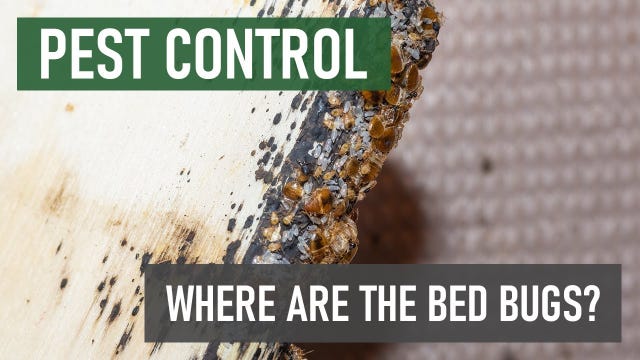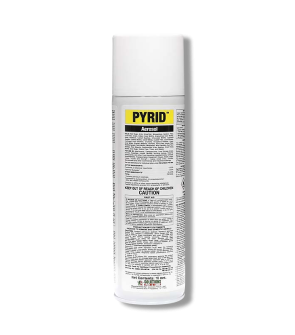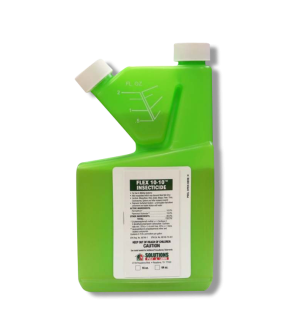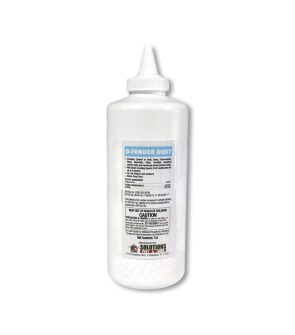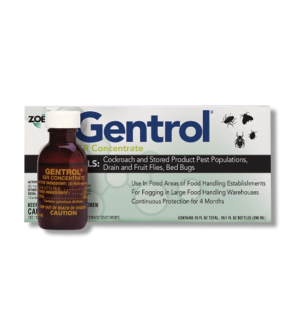Gain access to personalized product screening, the best pricing, rewards, and more!
Most Effective Products
Four Effective Ways To Kill Bed Bugs In Pillows
This page is an expert guide on removing bed bugs from infesting pillows in your home using the products and methods our experienced pest control specialists suggested. Follow this guide and use the recommended products; we guarantee you will successfully eliminate bed bugs.
Have you ever woken up to itchy, irritating bites and welts on your skin? More often than not, this is a surefire sign of bed bugs being present. Beware: they are not just in your bed or in your pillows.
While you may be convinced you have bed bugs, proving it by finding a live bed bug can be tough. Bed bugs are small wingless parasites skilled in finding places to hide in your bed. Before you can look, you will find these little devils crawling right underneath your pillow.
As soon as you examine your pillow and find nothing, you may conclude they have disappeared. However, that is not the case. Bed bugs don’t just disappear; they hide. They often hide inside your pillow cover or move to your mattress or box spring.
Wherever they may be, one thing is certain: you must carry out a bed bug control program and do so quickly before the population grows out of control.
What do Bed Bugs Look Like

Bed bugs are tiny, blood-sucking insects ranging between a 1/4 to a 1/3 of an inch long, oval-shaped, flat, and brown. After having a blood meal, they become elongated and swollen and have more of a reddish tone. Bed bugs range from a pinhead size up to an apple seed size.
Bed bugs also produce a distinct smell that is somewhat sweet but musty.
Bed bugs are usually felt before they are seen since they bite people in their sleep and hide when they wake up itchy.
Where Do Bed Bugs Hide
Although bed bugs are not microscopic insects, seeing them becomes difficult due to their hiding ability and knack for operating in the dark. However, some signs can tell you if bed bugs have infested your bedroom. Here are the most obvious indicators of bed bug presence on your pillows and bedding:
Despite the name, bed bugs don't just hide in pillows and bedding. Bed bugs will hide in any tight space, so check every crack and crevice in the room. Start with the mattress, checking underneath tufts and folds. Look for any blood stains, droppings, or smears on your bedding, blankets, pillows, and mattress.
When inspecting your bed frame, check for joints and gaps where bed bugs can hide. Lift up any removable slats and check the crevices between the bed and the frame, including the headboard.
After inspecting your bed and its frame, look in the secondary locations for bed bugs. Look behind picture frames, underneath and inside electronics like clocks, radios, and TVs, behind and inside dressers and drawers, underneath chairs and other furniture, behind electrical plates, among curtains and along the curtain rod, along or under baseboards, and even around door frames. Inspect any other tight spaces you feel a bed bug could get into, such as bookshelves, for activity.
Bed bug activity is typically isolated to one room. If they go beyond that, you’re dealing with a severe infestation.
How to Get Rid of Bed Bugs
If you have confirmed that bed bugs are infesting your bed and pillows, you will need to implement a treatment program to eliminate the population. For best results, we recommend taking a multi-pronged approach rather than using one treatment option.
Step 1: Wash Your Bedding
The first technique is thoroughly washing your pillows, pillow covers, and bed sheets. Pesticides should not be applied to pillows; they should be just washed and dried to address bed bugs that may be infesting them.
Transfer the bedding into a large plastic bag and then into the washing machine. Toss them in the washing machine on the highest heat setting, then follow up with a high-heat cycle in the dryer. This will kill adult bed bugs immediately.
Once the bedding is washed, we recommend not putting it back on your bed but rather placing it in a plastic bag until your bed and home are thoroughly treated.
Once the bedding has been washed, you'll want to treat the infested room with products like Flex 10-10 and Gentrol IGR. These together will kill and control bed bugs in all stages of their life cycles in multiple environments.
Step 2: Spray Mattress with Flex 10-10
Flex 10-10 is a synthetic pyrethroid insecticide that will quickly knock down bed bugs while being safe to spray on your bed. The application rate for a severe bed bug infestation is to mix 6.4 fluid ounces of Flex 10-10 into 1 gallon of water.
Do this with a handheld pump sprayer. Don’t broadcast this product over the whole mattress; instead, spray just the mattress tufts, edges, seams, and folds.
Step 3: Spray Bed Frame, Box Spring, and Crevices with Gentrol IGR mixed with Flex 10-10
Then, mix 1 fluid ounce of Gentrol IGR into your solution to treat 1,500 square feet. Once combined, spray the bed frame, box spring, furniture, closets, flooring, and baseboards.
Apply to your box spring after removing the netting to access all the cracks and crevices. Then, it can be applied to other areas of the room, such as the carpeting or flooring beside the bed and all other rooms adjacent to the bedroom, to prevent bed bugs from transferring from the bedroom to another room.
Step 4: Spray Pyrid Aerosol
Since bed bugs hide in tight cracks and crevices, use a flushing agent like Pyrid Aerosol to clear them out. Pyrid is a botanical insecticide that will kill bed bugs on contact. With its red straw and actuator in place, stick the end of the straw into the crack or crevice to be treated and spray along its length.
Step 5: Use D-Fender Dust
For spots where liquids are ill-advised, like behind the electrical outlet, D-Fender Dust will kill and control insects that attempt to cross its dry barrier. It’s also resistant to moisture, making applications near water heaters ideal.
To apply this product, you’ll need a handheld duster. Fill the duster halfway, and apply 1 oz. of product per 125 sq. ft. to thoroughly coat the application area.
Step 6: Protect your Bed and Box Spring with a Bed Bug Encasement
Once the room has been treated, we recommend you use a bed bug mattress and box spring encasements. The Clean Rest Pro Encasements come ready to use as purchased and require no additional installation tools.
When used properly, bed bugs cannot cross through the encasement in any direction, which either protects your mattress from infestation or entombs any bed bugs inside so they die out. These bed bug encasements are sold in a variety of sizes, so be sure to get the right covers for your mattress.
Prevention
Once you have eliminated bed bugs from your home, you can prevent them from invading in the future by regularly vacuuming your house, occasionally heat treating your home with a steam cleaner, washing and changing your sheets bi-monthly, and checking your belongings after traveling to make sure you aren't bringing bed bugs home.
When returning from traveling, vacuum out your luggage and wash your clothes immediately to eliminate the chance of bed bug reinfestation.
Key Takeaways
- Bed bugs are an irritating pest known for their itchy bites. They infest pillows and bedding but can also travel to other spaces in the home when the infestation is large.
- The top 4 effective treatment methods we recommend are 1)Washing your bedding, 2))Eliminating the bed bugs with Flex 10-10, Pyrid Aerosol, and Gentrol IGR, Preventative dusting with D-Fender Dust, and 4) Protecting your mattress and box spring with bed bug encasements.
- Prevent bedbug reinfestations by diligently vacuuming your home and washing fabrics regularly.






